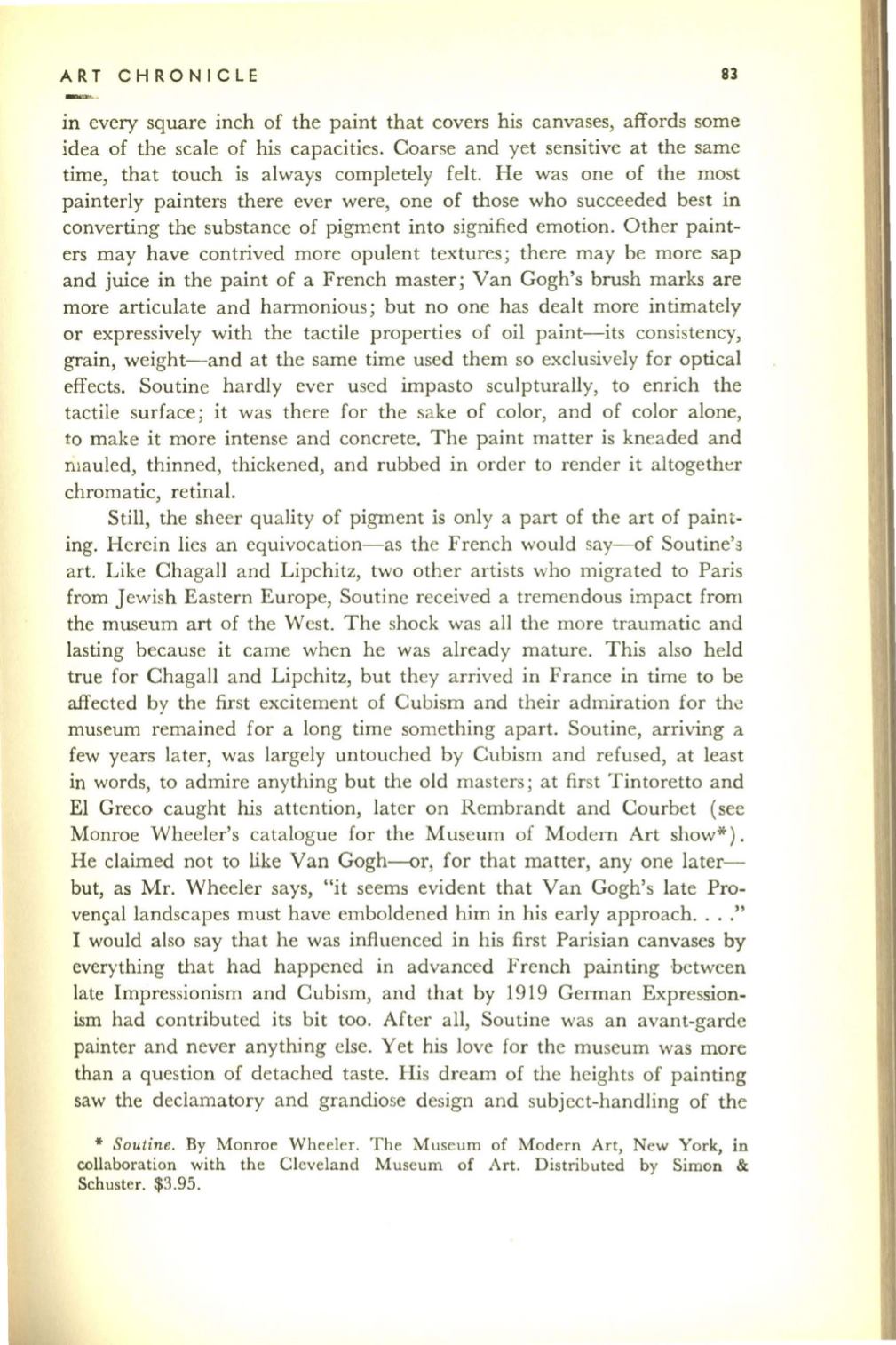
ART CHRONICLE
83
in every square inch of the paint that covers his canvases, affords some
idea of the scale of his capacities. Coarse and yet sensitive at the same
time, that touch is always completely felt. He was one of the most
painterly painters there ever were, one of those who succeeded best in
converting the substance of pigment into signified emotion. Other paint–
ers may have contrived more opulent textures; there may be more sap
and juice in the paint of a French master; Van Gogh's brush marks are
more articulate and harmonious; but no one has dealt more intimately
or expressively with the tactile properties of oil paint-its consistency,
grain, weight-and at the same time used them so exclusively for optical
effects. Soutine hardly ever used impasto sculpturally, to enrich the
tactile surface; it was there for the sake of color, and of color alone,
to make it more intense and concrete. The paint matter is kneaded and
mauled, thinned, thickened, and rubbed in order to render it altogether
chromatic, retinal.
Still, the sheer quality of pigment is only a part of the art of paint–
ing. Herein lies an equivocation-as the French would say-of Soutine'g
art. Like Chagall and Lipchitz, two other artists who migrated to Paris
from Jewish Eastern Europe, Soutinc received a tremendous impact from
the museum
art
of the West. The shock was all the more traumatic and
lasting because it came when he was a lready mature. This also held
true for Chagall and Lipchitz, but they arrived in France in time to be
affected by the first excitement of Cubism and their admiration for the
museum remained for a long time something apart. Soutine, arriving a
few years later, was largely untouched by Cubism and refused, at least
in words, to admire anything but the old masters; at first Tintoretto and
El Greco caught his attention, later on Rembrandt and Courbet (see
Monroe Wheeler's catalogue for the Museum of Modern Art show*).
He claimed not to like Van Gogh-or, for that matter, anyone later–
but, as Mr. Wheeler says, "it seems evident that Van Gogh's late Pro–
veneta
I
landscapes must have emboldened him in his early approach. . .."
I would also say that he was influenced in his first Parisian canvases by
everything that had happened in advanced French painting between
late Impressionism and Cubism, and that by 1919 German Expression–
ism had contributed its bit too. After all, Soutine was an avant-garde
painter and never anything else. Yet his love for the museum was more
than a question of detached taste. His dream of the heights of painting
saw the declamatory and grandiose design and subject-handling of the
*
Soutine.
By Monroe Wheeler. The Museum of Modern Art, New York, in
collaboration with the Cleveland Museum of Art. Distributed by Simon &
Schuster. $3.95.


